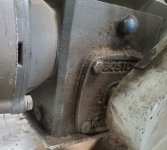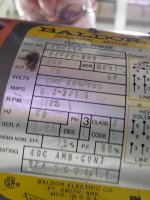I have an old Allen Bradley 160 ba03nps1 frequency drive feeding a conveyor belt.
Speed is adjust by a potentiometer except it doesn't go slow enough for the conveyor.
Motor is a 3/4 hp induction that goes into a gearbox (No, I don't know the ratio.)
Minimum Speed set to 0hz and all other parameters look normal to me.
Now I'm wondering how slow can a simple drive like this go?
Speed is adjust by a potentiometer except it doesn't go slow enough for the conveyor.
Motor is a 3/4 hp induction that goes into a gearbox (No, I don't know the ratio.)
Minimum Speed set to 0hz and all other parameters look normal to me.
Now I'm wondering how slow can a simple drive like this go?



